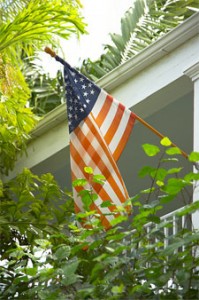Flag Flying Days
Every day is a flag flying day for government and military offices. As a private private individual, you are encouraged to fly the flag every day, but there are a few special flag flying days where an extra effort to fly the flag is encouraged.
Here are the special flag flying days:
- New Year’s Day, January 1
- Inauguration Day, January 20
- Martin Luther King Jr.’s Birthday, third Monday in January
- Lincoln’s Birthday, February 12
- Washington’s Birthday, third Monday in February
- Easter Sunday
- Mother’s Day, second Sunday in May
- Peace Officers Memorial Day (half-staff), May 15
- Armed Forces Day, third Saturday in May
- Memorial Day (half-staff until noon), the last Monday in May
- Flag Day, June 14
- Father’s Day, third Sunday in June
- Independence Day, July 4
- National Korean War Veterans Armistice Day, July 27
- Labor Day, first Monday in September
- Patriot Day (half-staff), September 11
- Constitution Day, September 17
- Gold Star Mothers Day, last Sunday in September
- Firefighters Memorial Day (half-staff), Sunday before or on October 9th
- Columbus Day, second Monday in October
- Navy Day, October 27
- Election Day, first Tuesday in November
- Veterans Day, November 11
- Thanksgiving Day, fourth Thursday in November
- Pearl Harbor Remembrance Day (half-staff), December 7
- Christmas Day, December 25
- State Birthdays
- Other days as may be proclaimed by the President of the United States

More flag flying days info:
Outdoor flag flying days and hours are from sunrise to sundown. Your flag shouldn’t be left up at night unless it’s lit according to the Flag Code. Make sure that your flag is an all weather flag as some types of materials don’t stand up to the weather well. Honor the flag by bringing it indoors, even on special flag flying days, when the weather is bad as it is considered disrespectful to subject the flag to damage.
Fly your flag on a flagpole if at all possible. Your flagpole can be either free standing or mounted on a building. It’s not proper to display the flag draped over anything, with the exception of a casket at a funeral. It should always be aloft and free, never touching anything beneath it. It goes without saying that the flag should be the object of attention and shouldn’t be part of any advertising or display, and there shouldn’t be anything attached or pinned to it.
If it’s necessary to mount a flag flat, like on a wall, make sure that the union is uppermost and to the flag’s own right (to the observer’s left). If you show a flag in a window, the union should be on the left as viewed from the outside. An easy memory tool is having the union “on the flag’s own right side”.